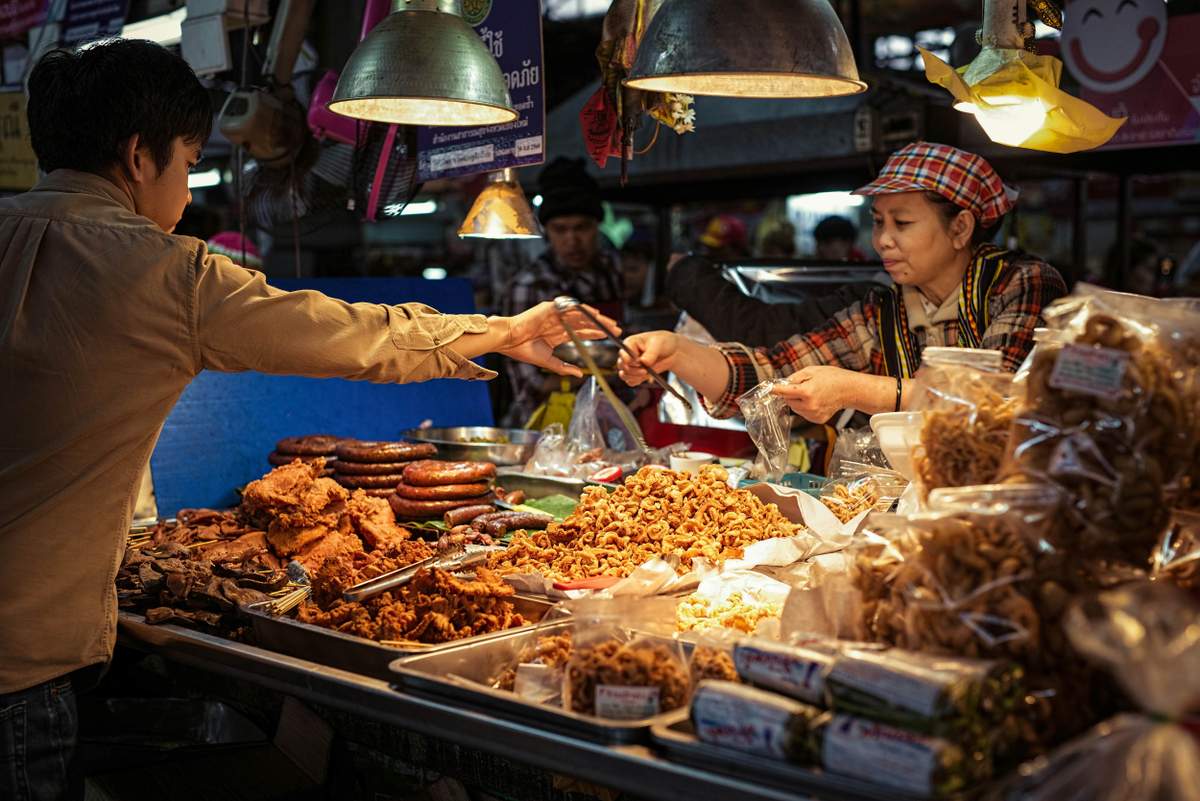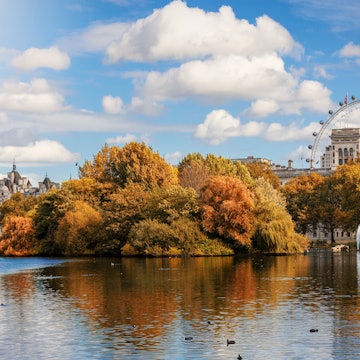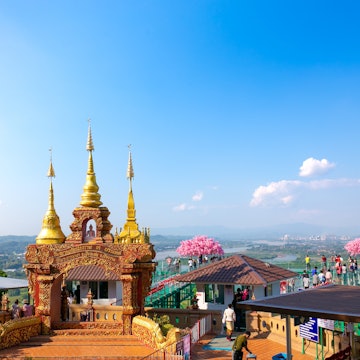
The ultimate guide to Thailand’s Mae Hong Son loop on a motorbike


Follow this four-day tour of the Mae Hong Son loop by motorcycle © Ivan Kvyatkovskiy / Getty Images
Tucked into Thailand’s northwest corner, Mae Hong Son province is no longer the off-the-beaten-track frontier it used to be, but remains one of the best areas to have an authentic taste of the region’s ethnic minority villages and breathtaking mountain scenery. There’s no better way to take in these mist-covered passes and steamy jungles than tackling the famed 1860 curves of the 373-mile-long (600km) Mae Hong Son Loop on a motorbike.
Begin the trip in the northern Thailand tourist hub of Chiang Mai. From here riders can choose to travel the Mae Hong Son loop in a clockwise direction by heading south from Chiang Mai towards Hot along route 108 (an ideal choice if you're still building confidence as a rider), or anticlockwise via the more challenging route 107 north to Chiang Dao – you won’t miss a thing either way.
The loop can be completed in a minimum of four days, but the more time you have, the better. Here’s our roundup of the best stops along the way.

Mae Hong Son loop itinerary and distances
Day 1: Chiang Mai – Chiang Dao – Pai
127 miles (205km), 5 hours
This magnificent stretch of road north of Mae Rim really sets the scene for this journey. Although many riders taking the north route head straight to Pai, the 50 mile (80km) deviation to Chiang Dao, a sleepy town nestled amongst a ring of vast limestone cliffs, is well worth the effort. The tarmac on this stretch, which winds its way through open expanses of verdant farmland and dusty towns, to sky-high gorges and vine-covered rocky outcrops, is in great condition, which is helpful if you’re still getting used to being on a bike.
One of the main highlights of Chiang Dao, known as the "City of the Stars", is the awe-inspiring cave complex about 3 miles (5km) out of town. It has more than 7 miles (12km) of stalactite-strewn tunnels to wander through. Some you can explore on your own, while others need a guide and a lantern (100B;$3). The town itself feels forgotten and receives little in the way of tourism, yet there are some decent cafes and guesthouses within the vicinity.
The turnoff to Pai and route 1095 is where the real bikers’ paradise begins – 762 bends wind their way through the steep mountain trails, over hills, and through river valleys. The curves are tight and often slippery or gravel-strewn, so take it slow. The descent into Pai itself – through paddy fields so green they almost glow – is wonderful. There are loads of places to eat, drink and sleep here – Sabai Garden Bungalows (8 Th Wiang Tai) on the outskirts is a good option. If you’ve got a spare day or two up your sleeve you won't have any trouble whiling them away at Jazz House Pai, eating Tom yum soup, drinking strong cocktails at sundown, and listening to live music.

Day 2: Pai – Soppong – Mae Aw / Ban Rak Thai
78 miles (125km), 2 hours
The most scenic stretch of road on the loop lies just beyond Pai – sharp hairpins and epic panoramas across a landscape that could be mistaken for the set of Jurassic Park. Charming little Soppong is worth a stop, if just for a coffee. The muddy Lang river runs along the lower flank of the town, which is lovely to watch from the teak terrace of the Cave Lodge. With local Shan food and whole-wheat bread and muffins fresh off a wood-fire oven, it’s an ideal spot to recuperate. Rooms are available from 800B ($24) if you feel like staying on to do some trekking in the area – start with a visit to the Lod cave, just five minutes away, whose mouth fills with more than 300,000 swifts at sunset.
About 10 miles (16km) outside Mae Hong Son, just after the turnoff to Fish Cave, is a small right fork onto a concrete road. Turn off and glide through the paddies toward the Chinese outpost village of Mae Aw, also known as Ban Rak Thai, right on the border with Myanmar. A short while into the 25 mile (40km) stretch, the scenery will feel reminiscent of medieval China; tea plantations are laid out across the wild scrubland in a patchwork of browns and dark greens, Mandarin scripture covers wooden teahouses and, as you reach the village itself, a serene glassy lake comes quietly into view. Get yourself a steaming cup of Chinese black tea and enjoy the tranquility. Guesthouses on the lake cost from 300B ($9).

Day 3: Ban Rak Thai – Khun Yuam – Mae Sariang – Mae Chaem
124 miles (200km), 3-4 hours
Once you hit Mae Hong Son town (City of Three Mists) the road seems to level out. Hairpins change into sweeping racetrack curves, which are exceptionally fun to ride. The city itself tends to attract Thai and Chinese holidaymakers. There are guesthouses and restaurants surrounding the banks of Jom Kham Lake and the town is a good base for day rides.
Khun Yuam, 53 miles (85km) south of Mae Hong Son town, is a stopping point for one main reason: a moment of deliberation. Continue south and onto the open plains of Mae Sariang or head inland on route 1263 to visit Namtok Mae Surin National Park, home to one of Thailand's most beautiful waterfalls. Layered upon multiple levels of rocks and hemmed by a vertical wall of karst rock and viridian jungle, Mae Surin waterfall's sheer 590ft (180m) drop should be a reason good enough to convince any rider to take a break from the throttle.
Keep in mind that the route to Mae Sariang is much easier, yet the latter is a terrific adventure – granted you have good tires and decent suspension. A rough and inhospitable stretch thanks to large potholes and rocks, it’s tough riding.
Mae Chaem is the last chance saloon town before the long climb to the summit of Doi Inthanon, Thailand’s tallest mountain. It’s a good spot to refuel both the bikes and yourself for the evening. There are very few places to stay here, but the Mae Chaem Resort, just off the main strip, is comfortable, clean and it has a swimming pool.

Day 4: Mae Chaem – Doi Inthanon – Chiang Mai
108 miles (175km), 1hr 45min
It can be a misty ride up to the mountain summit, especially in the rainy season, but the wide, open roads make it easy to navigate for the most part. A very steep route carves its way through a swathe of cool forest and if the weather is clear at the summit you’ll be in for a magnificent spectacle. If it’s cloudy (as it often is) the view may be a little underwhelming. But we think it’s worth the risk.
If you are not ready to leave this beautiful slice of northern Thailand just yet, consider staying inside the Doi Inthanon National Park, where the local rangers rent fully equipped cottages, or you can camp at the Dong Son campground near the top of 8415 ft-high (2565m) Doi Inthanon peak. Rise early and strike on the short 1.6 miles (2.7km) Kew Mae Pan hiking trail to see some of Thailand’s best scenery at sunrise.
It’s a simple ride back to Chiang Mai’s comforts on the overwhelmingly uninteresting route 108, but that said, it does give you time to reflect on that epic journey behind you.

When to go: the best times to drive the Mae Hong Son loop
The best time to ride on the Mae Hong Son loop is during the region’s two dry seasons, from November to February (cool) and March to June (hot), when rains are less likely to spoil the fun. The cool season is particularly nice as the fresh weather makes it more pleasant to be outdoors, and the landscapes color up in a rainbow of wildflowers in bloom.
This said, in recent years northern Thailand has suffered severe air pollution in late winter (January–March) due to local farmers burning stubble. Visibility is affected, and a facemask is necessary. The air clears up by April, which is however the hottest month. If planning to ride between July and September, carry proper rain gear or a poncho and be prepared to ride through the monsoonal rains.
Bear in mind the cool season between October and March is also the most crowded, with both domestic and foreign tourists.
Motorcycle rental: where to get your wheels
Take your time when choosing a bike to rent. Chiang Mai is the best place to look as it has an enormous variety of shops and rental outlets offering similar hardware. It’s certainly possible to complete the loop on one of Thailand’s ubiquitous 90cc automatic scooters, but bigger is usually better on this kind of ride – just remember to check your insurance to see what engine size you’re covered for.
Something like a Kawasaki KLX150 off-road bike is good as it has an excellent suspension and ride quality. Try POP Big Bike (Kotchasan Road), where prices range from 900B for smaller models to 3500B per day for the classy Honda Africa Twin. Other bike shops worth checking out in Chiang Mai include Marble Motorcycle For Rent (131/2 Moon Muang Rd) and TBB Motorcycle Adventures (438/13 Chiang Mai Land Soi 7).

Rules of the road: helmets and insurance
Wearing a helmet is compulsory in Thailand, and riders will be fined if found without. Getting travel insurance is a recommended, especially because good hospitals are non-existent outside of Chiang Mai, and in the case of a severe crash you will have to be flown back to the city.
Most rental companies insure their bikes under Thailand’s Compulsory Motor Insurance which covers third parties and passengers, but make sure your vehicle comes with all the required paperwork because police in these remote locations have very short patience for foreigners.
How to tour the Mae Hong Son loop without a motorbike
Visiting the Mae Hong Son loop is possible even for those who can’t ride or are not comfortable driving a motorcycle in a foreign country.
By public transport
With the loop’s increased popularity, mini-van and local songthaew (pick-up trucks adapted to share taxi) services are ubiquitous between the key towns along the route. Tickets are cheap, but these buses don’t offer any flexibility in terms of stopping and exploring the sights along the route, and can also be uncomfortable for those who suffer from motion sickness – remember that there are more than a thousand twists and bends along these mountain roads.
Local transportation is also very limited around Mae Hong Son, particularly for the charming village of Ban Rak Thai.
By rental car and taxi
Rental cars and taxis are the safest option to give untrained motorcycle riders the freedom to explore the Mae Hong Son loop as they please. Taxis with drivers cost 4000/5000B ($120–150) per day, plus the cost of daily accommodation for the drivers. Note: drivers rarely speak very good English.
The other option is renting a car and self driving. In general, any foreign driving license in English carrying a photo of the driver is valid in Thailand, but to avoid potential issues with rental companies, especially if booking online, it’s best to get an International Driver’s Permit before traveling to Thailand. Global budget car search engine Economy Bookings offers good deals in the region: as a guideline, the cost of an air-conditioned car starts from 6500B ($200) per week. Check more information on the Thailand page of the International Drivers Association.
By private tour
It’s possible to travel along the loop using local tour operators. Mae Hong Son-based Mae Hong Son Holidays is a one-stop shop for guided local tours ranging from one to eight days in length, and vehicle rentals with trained local guides. Thailand Hilltribe Holidays organizes five-day trips including a homestay with the Kayan ethnic group.
Tips for riding the Mae Hong Son loop
Always wear a helmet; full-face if possible.
Ensure rental bikes come with third-party insurance as a minimum, and your own insurer covers motorbike travel. Read the fine print to find out exactly what you’re covered for, and how much excess is chargeable.
If you have insufficient motorcycle riding experience or are new to driving in Thailand, consider using another form of transport to tackle the Mae Hong Son loop. Not only does the Ministry of Tourism and Sports of Thailand consider Road 1095 (the northern part of the loop) among the country’s most dangerous, but the country is also considered the world’s most deadly places for motorcyclists. In other words, please don’t strike off on the Mae Hong Son loop by motorbike if you aren’t a very confident rider.
Try to avoid leaving your passport with the motorcycle rental agency even if it’s requested as bonafide proof for the safe return of your rental. Opt for a cash deposit instead. Passport-based scams are common, especially when using the cheaper mom and pop agencies that can be found all over Chiang Mai.
Accommodation along the loop is best booked in advance, especially during the peak season between October and March.
You might also like:
You won't believe the views on these 9 iconic Thailand hikes
Thailand's 3 best scenic journeys we know you're going to love
The 15 most amazing places to visit in Thailand













